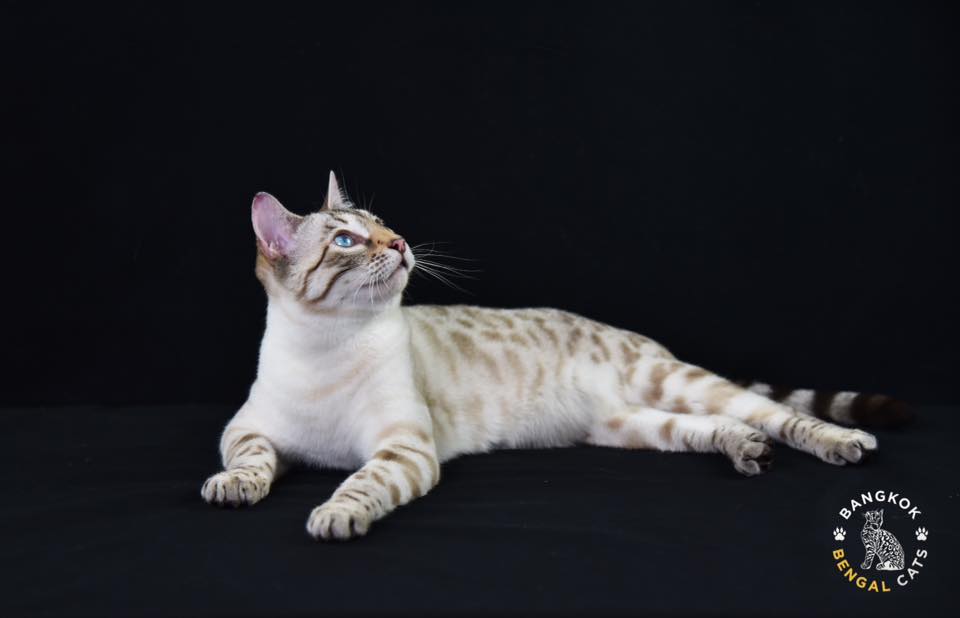What makes a Bengal look like a snow Bengal? Where this colour comes from?
Here there is some information about the “snow colour” and its genetics.
Not all colours work the same way, so please do not extrapolate this info to other colours as it might be wrong. In other days I will explain about other colours.

Snow colours were introduced through domestic cats Siamese and Burmese. However, they were accepted as a registered colour so that breeders could produce a duplicate of the snow leopard. While many breeders can guess a snow colour, the most accurate way to determine colour is through genetic colour testing.
Snow colour comes from a recessive gene from what we call “lynxpoint” or “colorpoint” (CS). When a cat has two copies of this gene, it will be a snow lynx Bengal (CS/CS)
This gene colour is different from the “Snow Sepia” colour that is coming from Burmese/sepia genes (CB). Still though, the snow sepia gene is a recessive gene, meaning that to have a Snow Sepia Bengal, the cat needs to have 2 copies of this gene to be expressed (CB/CB)
Finally there is the Snow Mink colour. This colour is a combination of the two colours above, meaning that a Snow Mink Bengal has a copy of the lynxpoint gene and the sepia gene (CS/CB or CB/CS).
How do recessive genes work, and how does this affect to the colour of my cat?
Sometimes breeding 2 brown Bengals, you may have snow Bengals in the litter! How is this possible? Well, as recessive genes, it means that parents were carriers of the snow genes (C/CS), even though they did not have 2 copies of the gene, and therefore they were not snow in colour. If they only have one copy, the snow colour will not be expressed but it can pass to the kittens. This is one of the reasons why the pedigree is also very important, as we can know the colour of the ancestors of our cats 5 generations before and we can follow many genes, sometimes without the need of genetic testing.
Let’s have a look at these pictures so we can understand a bit more about the genetics!





